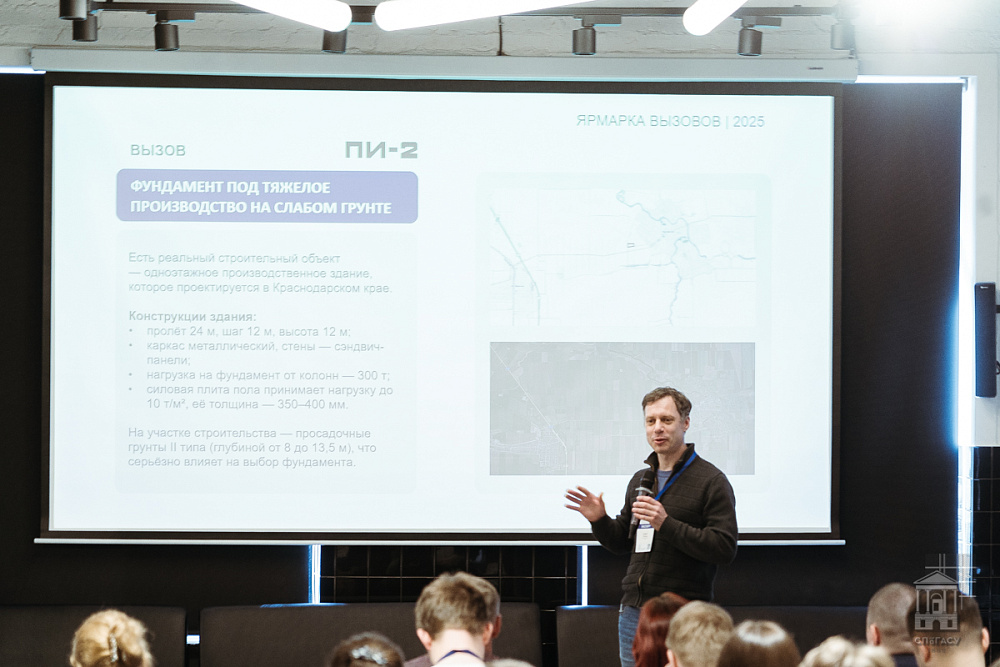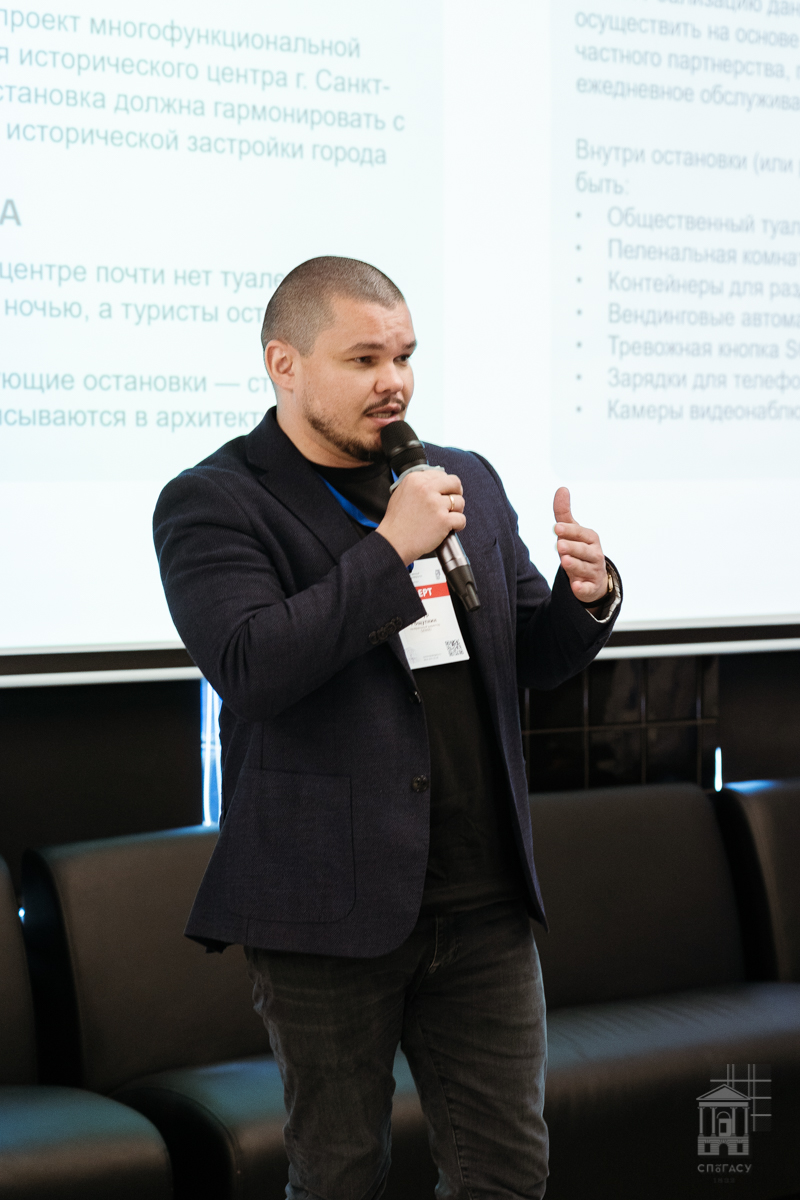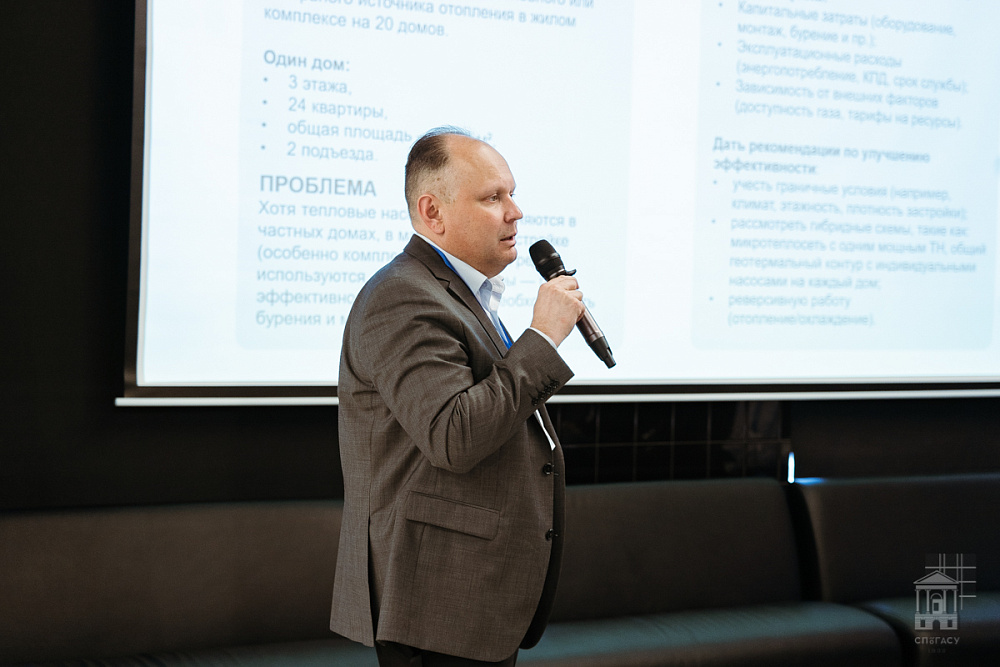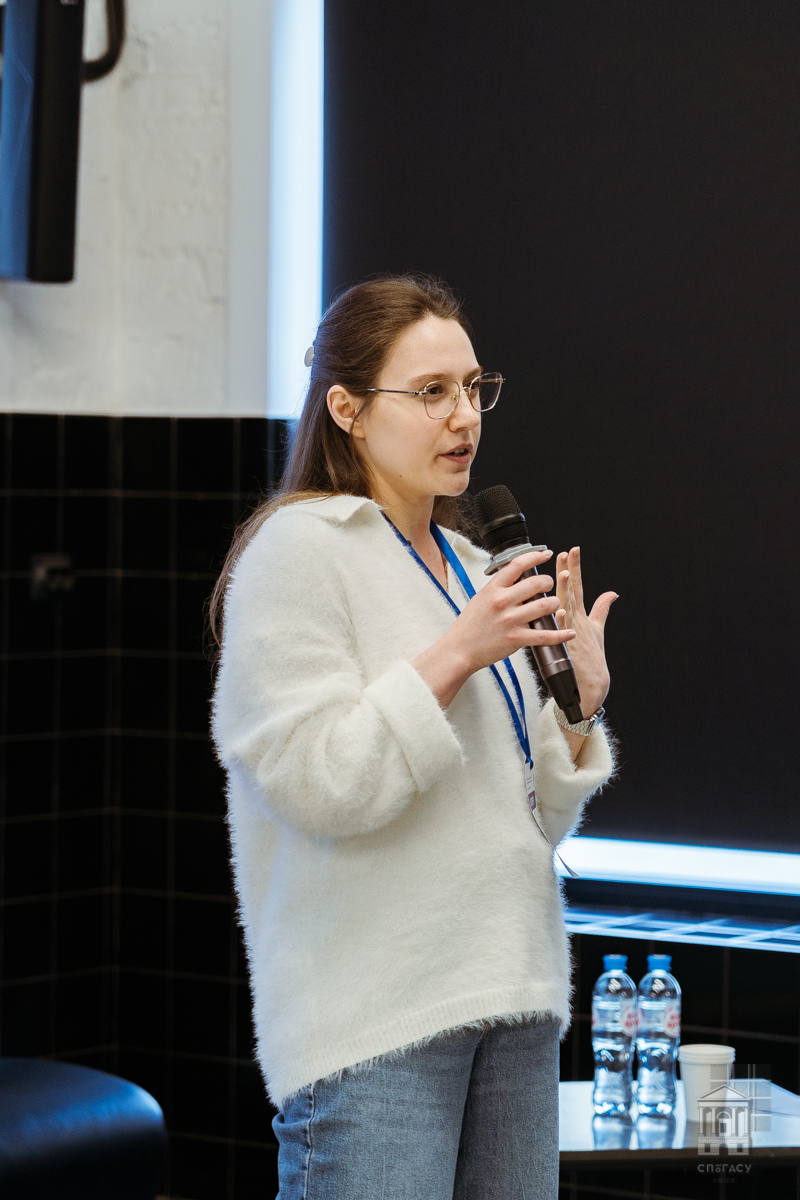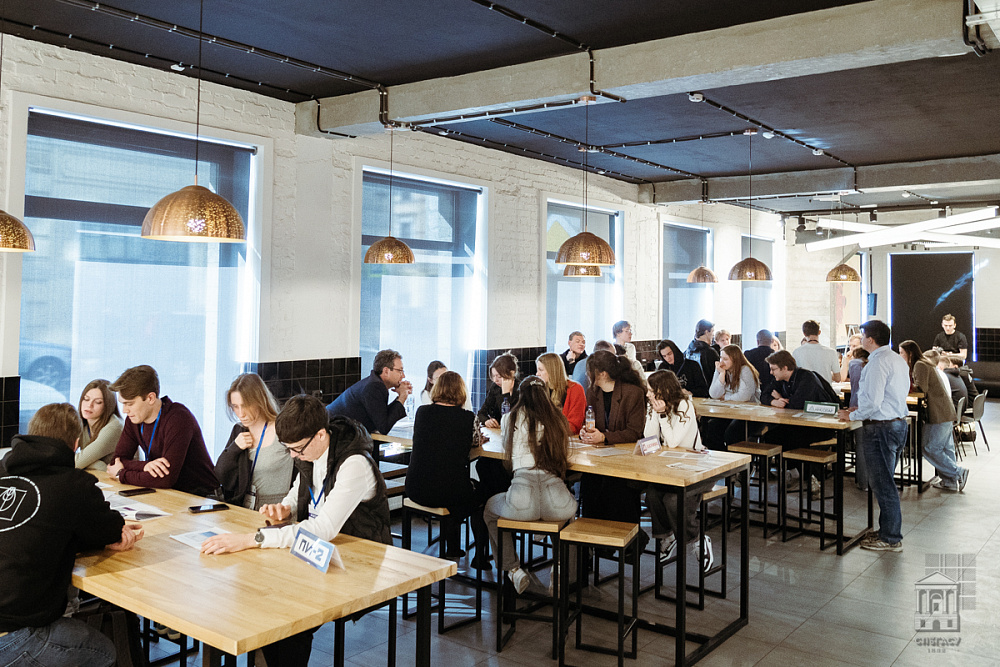 Marina Malyutina opens the "Challenge Fair"
Marina Malyutina opens the "Challenge Fair"
SPbGASU students responded to the challenges of the construction industry in an unusual event. On 13 May, the Center for Student Entrepreneurship and Career held the "Challenge Fair" at our university for the first time.
Experts from five partner companies set real-life tasks for the students. Over the course of an hour, five teams, under the guidance of their mentors, generated solutions and then presented them to the experts and spectators. In addition, the Challenge Fair featured a Contact Wall, where any student, teacher or company representative could leave information about themselves: contact details, description of an idea or project, who or what they were looking for.
SPbGASU – a growth point for technological entrepreneurship
Vice-Rector for Youth Policy Marina Malyutina spoke about how SPbGASU students are taught innovative entrepreneurial thinking. According to Marina Viktorovna, technological entrepreneurship is a certain challenge for students who want more than just to master the curriculum, they want to develop in the professional sphere.
Experience has shown that our students are capable of technological entrepreneurship: SPbGASU took third place in the TechnoPiter accelerator, and for the second year the university has been developing the Startup as a Diploma project, within which final qualification works are defended.
Marina Viktorovna emphasized: "The Challenge Fair is a "bridge" to the fact that next year some of the participants decide to defend their final qualification works in the startup format. This is necessary for the university, which is focused on practice, and this is necessary for the industry. Graduates who think boldly and innovatively are extremely in demand.
Challenges from partner companies
Chief designer of the company "Project Institute No. 2" Andrey Poklad suggested that students think about the idea of a foundation for heavy production on soft soil. The expert told about a real construction project - a one-story industrial building, which is being designed in the Krasnodar region, for which an alternative design solution for the foundation should be developed.
How to create a roofing structure that will tell you when cracks, leaks or moisture appear in it? This question was asked by Rockwool employees: Flat Roofing Development Specialist Anna Lyubimtseva and Leading Design Engineer Andrey Petrov. The speakers proposed developing a concept of "smart" thermal insulation for roofs.
General Director of the Gensey company Artur Roshchupkin invited students to develop a project for a multifunctional public transport stop for the historical center of Saint Petersburg, which should be in harmony with the architecture of the city's historical development. The speaker drew attention to the current problem of the lack of public toilets in the center, especially at night. Tourists are left without amenities. In addition, the existing glass stops do not fit well into the architecture.
Ilya Voilokov, a specialist in technical support at INSOLAR and Aassociate Professor at the Department of Construction Management, called for assessing the possibility of using heat pumps as the main or backup heating source in a residential complex. Although heat pumps are already used in private homes, they are rarely used in low-rise buildings, especially complex ones.
Dmitry Gladkovsky, Director of the Project Management Unit at GloraX, set a challenge for students: to create an automated documentation verification system. Developers face the problem of checking large volumes of working documentation for compliance with design standards. Manual verification requires a staff of experts, time-consuming work, and is subject to the human factor, which leads to errors and losses. An automated verification system based on a neural network could solve this problem, but its creation is difficult due to the lack of a training documentation base. Existing projects are not yet effective enough for widespread use.
Innovative solutions from students
The Blue team's response to the challenge from Project Institute No. 2 was a dynamic borehole filled with crushed stone or concrete mixture.
The Purple team responded to Rockwool's challenge by proposing to use sensors that consist of a capsule with a piston filled with a silica gel-type material that expands when in contact with water.
The Red team responded to the challenge of the Gensey company and presented the idea of a multifunctional public transport stop, which consists of a restroom and a waiting area. It includes a baby changing room, containers for separate waste collection, vending machines, an SOS button and much more.
The Green team's response to the challenge from INSOLAR company was a plan for a residential complex of twenty houses, each with a thermal circuit for the recovery of human heat.
The Orange team responded to the task from the GloraX company and offered to check the already created digital models of buildings that the developer has.
New challenges lie ahead
When asked if they liked this format of the event, the students answered with a unanimous "yes!" Many expressed a desire to participate again.
Marina Malyutina summed up the results, expressing confidence that in collaboration with partners the university would develop a practice-oriented approach and move forward.


.jpg)






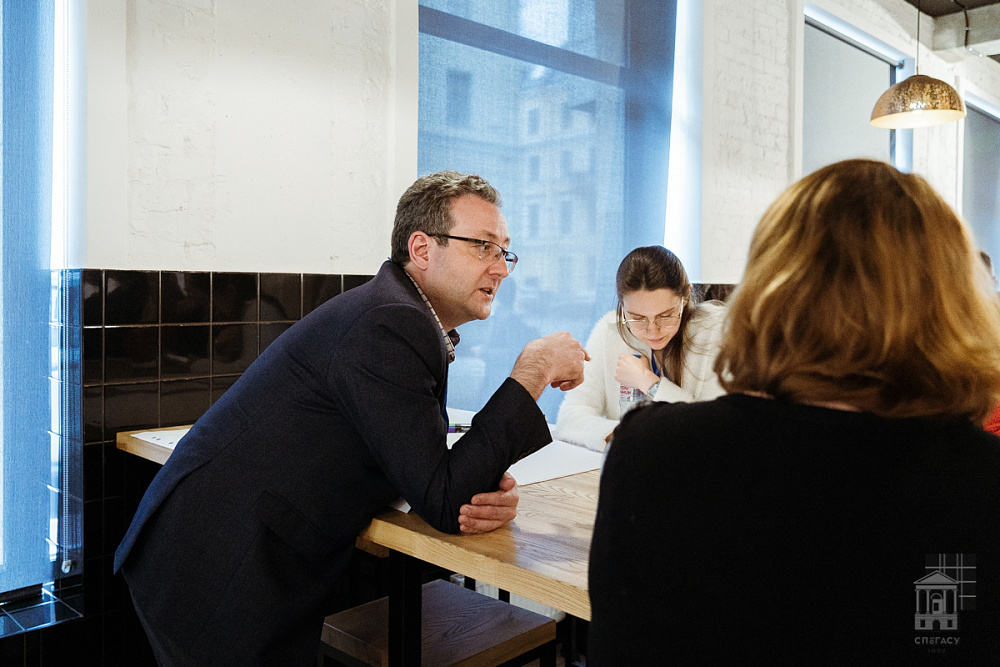
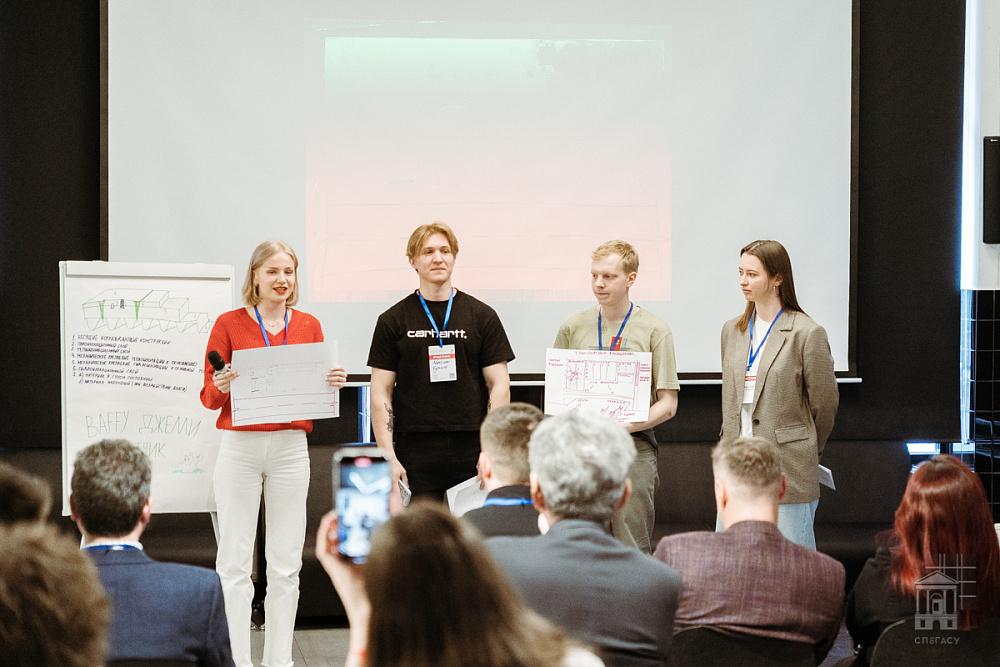
.jpg)
